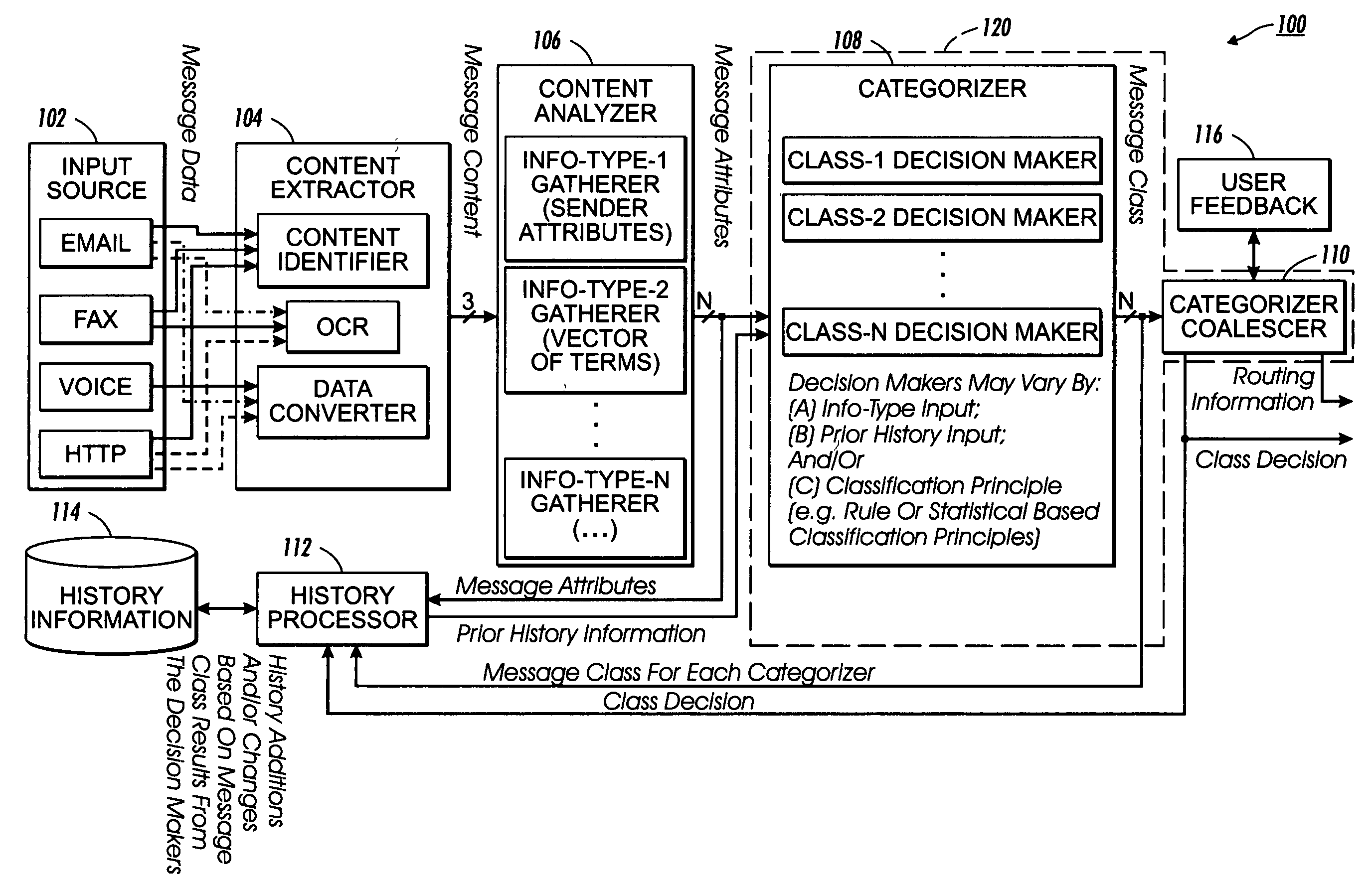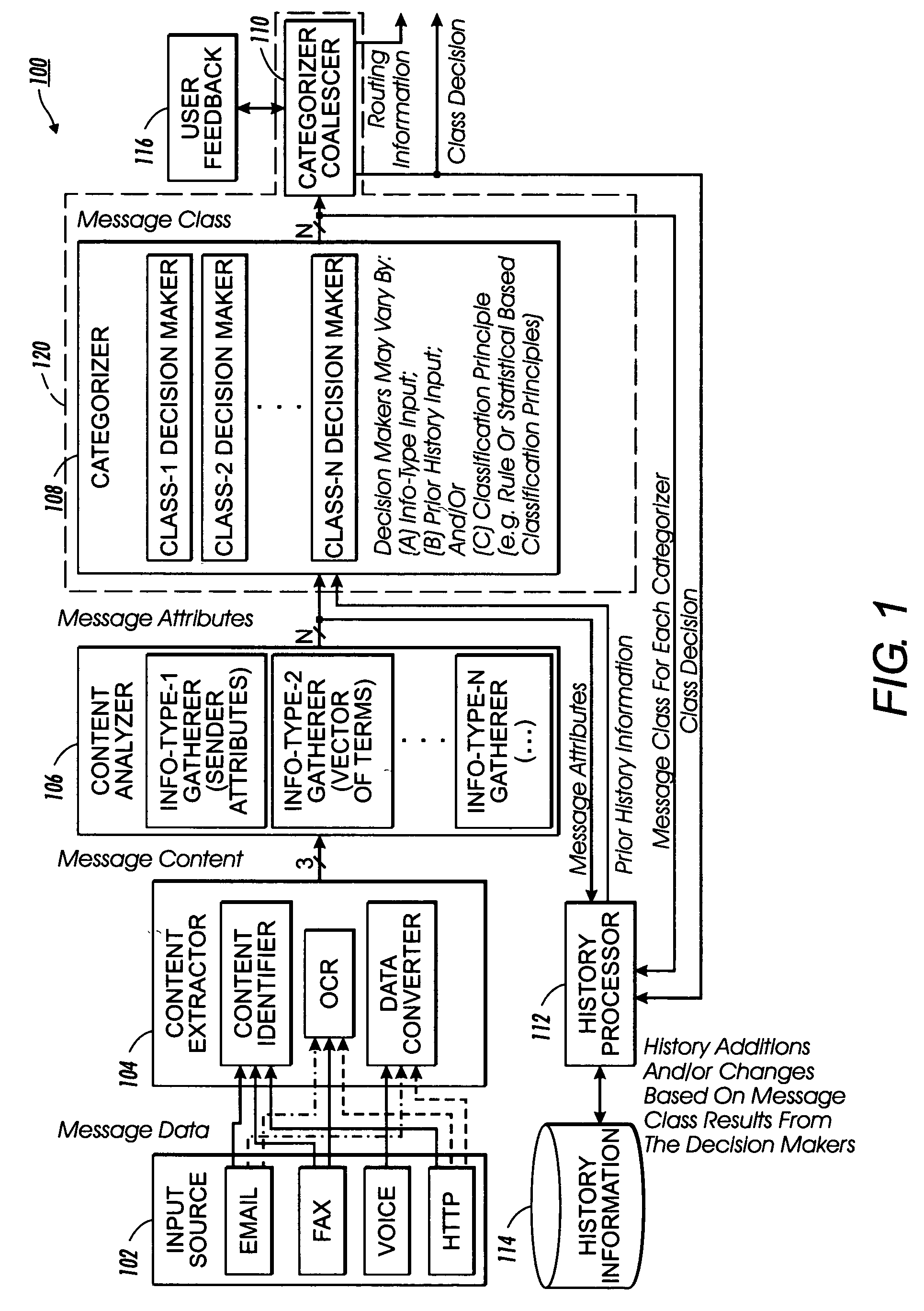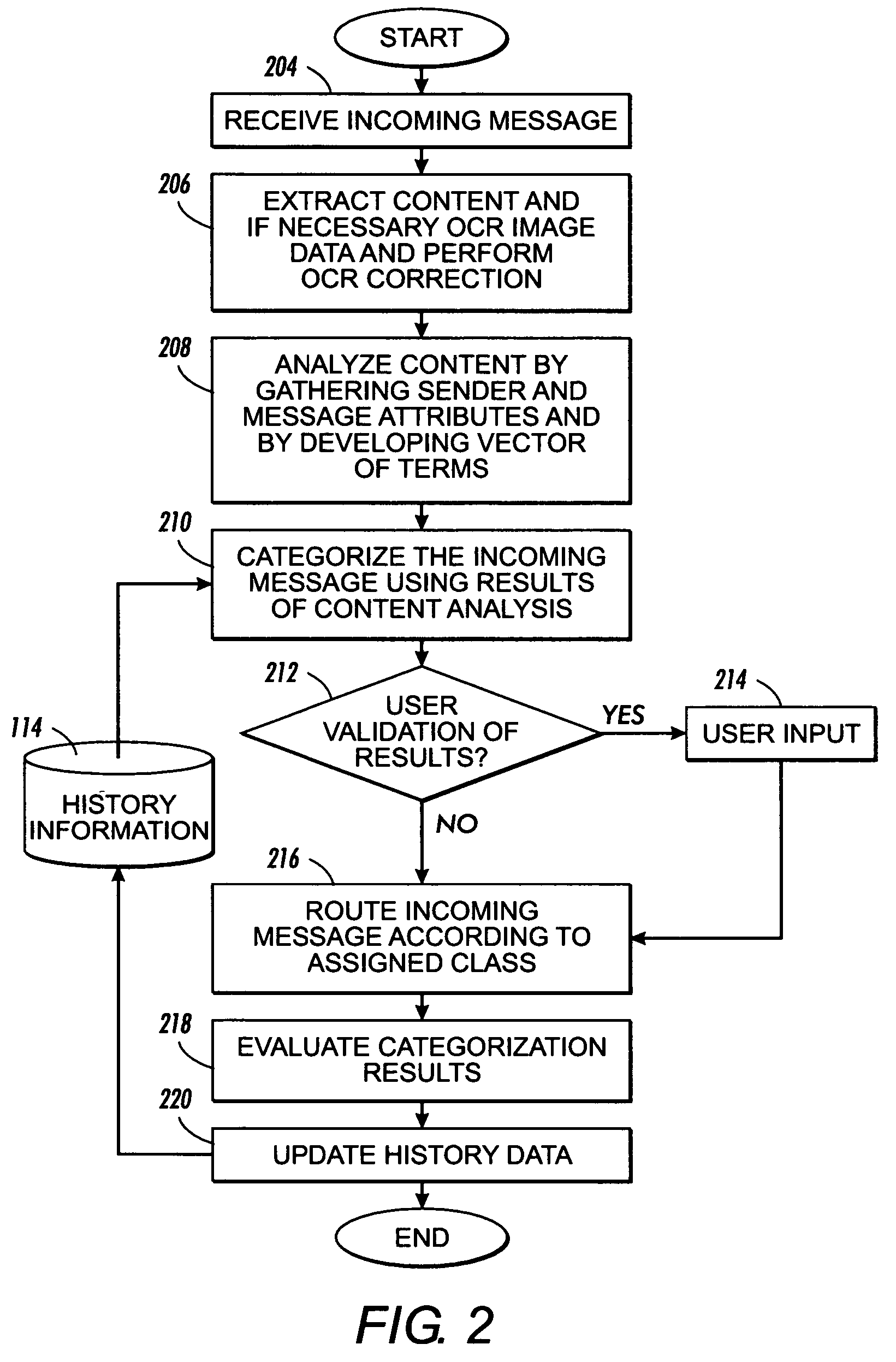Adaptive spam message detector
a technology of spam message detector and spam filter, applied in the field of adaptive spam message detector, can solve the problems of economic cost to individuals, consumers, government agencies, and businesses that receive unsolicited electronic messages, and require some user intervention, so as to processing, reduce the cost of processing, and reduce the effect of processing costs
- Summary
- Abstract
- Description
- Claims
- Application Information
AI Technical Summary
Benefits of technology
Problems solved by technology
Method used
Image
Examples
first embodiment
[0045] In a first embodiment, whitelists and / or blacklists stored in the history information 114 are updated using user feedback 116. In this embodiment, senders addresses (e.g., numbers or email or IP or HTTP addresses) of messages that are determined by categorizer coalescer 110 and acknowledged from user feedback 116 to be spam are added to the blacklist (and removed from the corresponding whitelist) information associated with that sender (e.g., phone number (determined by callerID or facsimile header) or email or IP or HTTP address), thereby minimizing future spam received from that sender. This may be implemented either automatically (e.g., implicitly, if the status of a message identified as spam is not changed after some period of time), or only after receiving user feedback confirming that the filtered message is spam. This embodiment provides a dynamic method for filtering senders of spam who regularly change their identifying information (e.g., phone number or email or IP...
second embodiment
[0048] In a second embodiment, the history processor 112 adapts the whitelist and blacklist (or simply blacklist or simply whitelist) stored in history information 114 by leveraging history information concerning the various message attributes (e.g., sender information, content information, etc.) received from the content analyzer 106 and the one or more decisions received from categorizer 108 (and possibly the overall decision if there is more than one decision maker that is received from the categorizer coalescer 110). That is, the history processor 112 keeps track of sender information in order to combine the evidence obtained from the incoming message with the available sender history. Using this history, the system 100 is adapted to leverage sender statistical information to take into account a favorable (or unfavorable) bias if the sender has already sent several messages that were judged (i.e., by its class decisions) legitimate (or not legitimate) with a high confidence or a...
third embodiment
[0059] In a third embodiment, the history processor 112 includes a hybrid whitelist / blacklist mechanism that combines history information and user feedback. That is, supplemental to the prior two embodiments, when a user is able to provide feedback, the profile P(content|spam) of the user may change. This occurs when a decision about a borderline spam message is misjudged (for example, not to be spam), which may result because a new vocabulary was introduced in the message. If the user of the system 100 provides user feedback that overrides an automated decision by ruling that a message is actually spam (when the system determines otherwise), then the profile P(content|spam) of the user is updated or adapted to take into account the vocabulary from the message.
[0060] More specifically, this embodiment combines the first two embodiments directed at utilizing user feedback and sender history information to provide a third embodiment which allows the system 100 to adapt over time as on...
PUM
 Login to View More
Login to View More Abstract
Description
Claims
Application Information
 Login to View More
Login to View More - R&D
- Intellectual Property
- Life Sciences
- Materials
- Tech Scout
- Unparalleled Data Quality
- Higher Quality Content
- 60% Fewer Hallucinations
Browse by: Latest US Patents, China's latest patents, Technical Efficacy Thesaurus, Application Domain, Technology Topic, Popular Technical Reports.
© 2025 PatSnap. All rights reserved.Legal|Privacy policy|Modern Slavery Act Transparency Statement|Sitemap|About US| Contact US: help@patsnap.com



